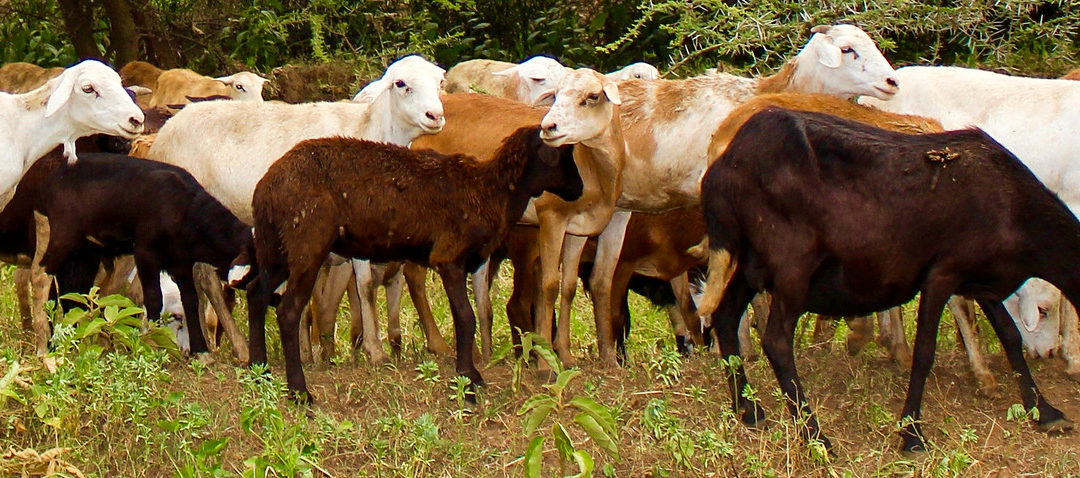Spotlight on livestock population trends

Livestock population numbers and trends are fundamental to inform policies and investments. But how good are we at counting?
By Gareth Salmon, Vanessa Meadu & Alap Mehta
World Population Day on July 11 seeks to focus attention on the urgency and importance of human population issues. Demographic trends including population growth, ageing, migration and urbanization help reveal important insights that can guide policies to improve peoples’ lives. We believe livestock population data is equally critical. In Low-and-Middle-Income Countries livestock is central to human livelihoods, health and nutrition. Globally, the impacts of livestock on the environment is well recognised. As such, data on livestock populations and the trends in this data should be fundamental pieces of evidence informing livestock development investments and policies. Counting livestock is not straightforward, but the available data can still shed light on trends.
How do countries gather livestock population data?
The Food and Agriculture Organization (FAO) FAOSTAT maintains a comprehensive dataset detailing global annual livestock population numbers since 1960. This global dataset is considered the principle source of national livestock numbers by the livestock data community. Census data collected by national governments make a significant contribution to the dataset. In reality, many governments are not able to systematically collect livestock census data on a regular basis due to budget constraints, civil strife, or other challenges. These challenges were further explored in a 2014 report, Livestock in Africa: Improving Data for Better Policies. This means livestock numbers are often estimated on a sample basis, or based on the most recent data collected and some assumed growth trends informed by neighbouring countries and historic patterns. This can result in conspicuous patterns, for example Niger’s cattle population increasing by a constant 6% every year between 1987 and 2018. It is important to recognise that FAOSTAT flag the data to inform the user if the data is Official data (reported by countries) or imputed or estimated by the FAO to fill in gaps.
Explore livestock populations over time
We have produced a visualisation to explore patterns and trends in the FAOSTAT livestock population data. The tool can be used to observe some of the major changes in livestock populations and to investigate idiosyncrasies in the well-used dataset. Link to visualisation
Some major trends and points of interest observable in the data
Globally between 1961 and 2018 poultry (chicken, ducks, turkey and geese) populations have seen the greatest change. Poultry populations have increased by almost 500% to be the most populous livestock species, with over 25.6 billion individual animals in 2018. This change is exemplified by increases in chicken populations in Southern, South-Eastern and Western Asia, which saw growth of over 1500% between 1961 and 2018. China have been a significant driver behind this trend – in 2018 China had 5.3 billion chicken, over 22% of the world population. This trend is closely linked with an increase in per-capita consumption of poultry products.
A change in methodology boosts Uganda’s cattle numbers
In 2007, The Government of the Republic of Uganda recognised that their livestock data was limited. In response, the National Livestock Census was launched. The new census specifically considered livestock populations, as opposed to a broad agricultural census. This change saw the recorded cattle population jump from 7.2 million in 2007 to 11.5 million in 2008. This increase of 60% was predominantly due to a change in methodology, and had significant budgetary implications for the ministry responsible for animal resources.

Avian flu decimates Asian chicken populations
In 2004 Thailand had over 250 million chicken, but in 2005 this had dropped by 25% to 187 million. Likewise, in 2010 there were 286 million chicken in Japan, a year later 179 million were recorded, a drop of 38%. It is unlikely these significant changes are due to counting methodology or reporting; instead the large scale culling of Asian chicken populations in response to Avian Flu is more likely the causes for these crashes in population.
Addressing data gaps for India’s cattle populations
As mentioned, FAOSTAT estimate data points to fill gaps where official country livestock counts are not available. In 2007 and 2012 Indian agriculture censuses reported 199 and 191 million cattle, respectively. Between these years estimations were used suggest the missing data points. Since 2012, a similar downward trend has been used to estimate cattle population numbers in the absence of census data. In 2018 the estimated cattle population sat at 185 million. However, the recent 2019 census has reported 192.5 million cattle. The next update to our visualisations is now likely show a significant jump up in 2019 from the estimated populations in 201. This brings home the importance of recognising the FAO flags when interpreting this dataset
Next steps for improving livestock population data
While the FAOSTAT country-level population data is a well-used resource available for decision-makers seeking to understand change over time, the FAO have also led efforts to more accurately, and to a higher granularity, estimate global livestock populations. The Gridded Livestock of the World (GLW) initiative builds a comprehensive picture of livestock populations using sophisticated estimation techniques to fill in the gaps from census data. Sub-national granularity of livestock population data is also a welcome feature of GLW, as such data is highly valued when planning local interventions, directing resources and assessing markets for private investments. The GLW approach, using machine learning and advanced models, suggests the future of accurate livestock population data won’t rely so heavily on resource intensive censuses.
Details about the author(s): Gareth Salmon is a Senior Researcher with SEBI – Supporting Evidence Based Interventions. Vanessa Meadu is the Communications and Knowledge Exchange Specialist for SEBI. Alap Mehta is a Data Scientist for SEBI. SEBI facilitates the Livestock Data for Decisions (LD4D) Community of Practice and manages livestockdata.org.
Header photo: ILRI/ Camille Hanotte (source)
June 8, 2020
Gareth Salmon





